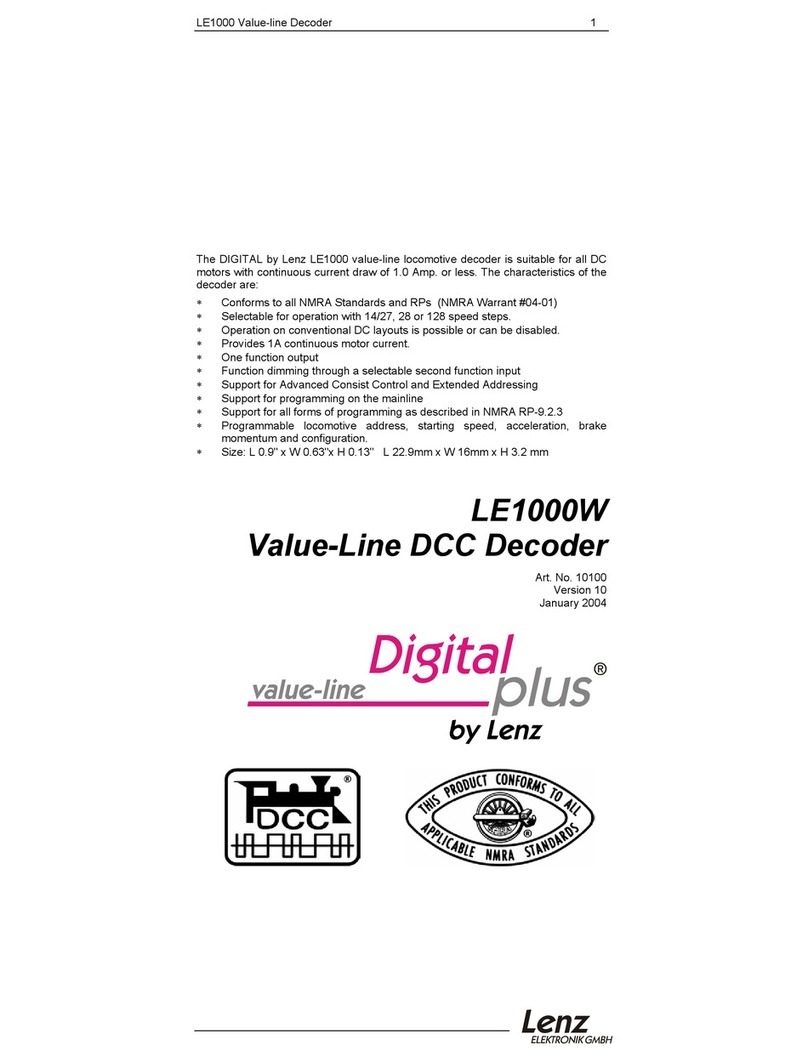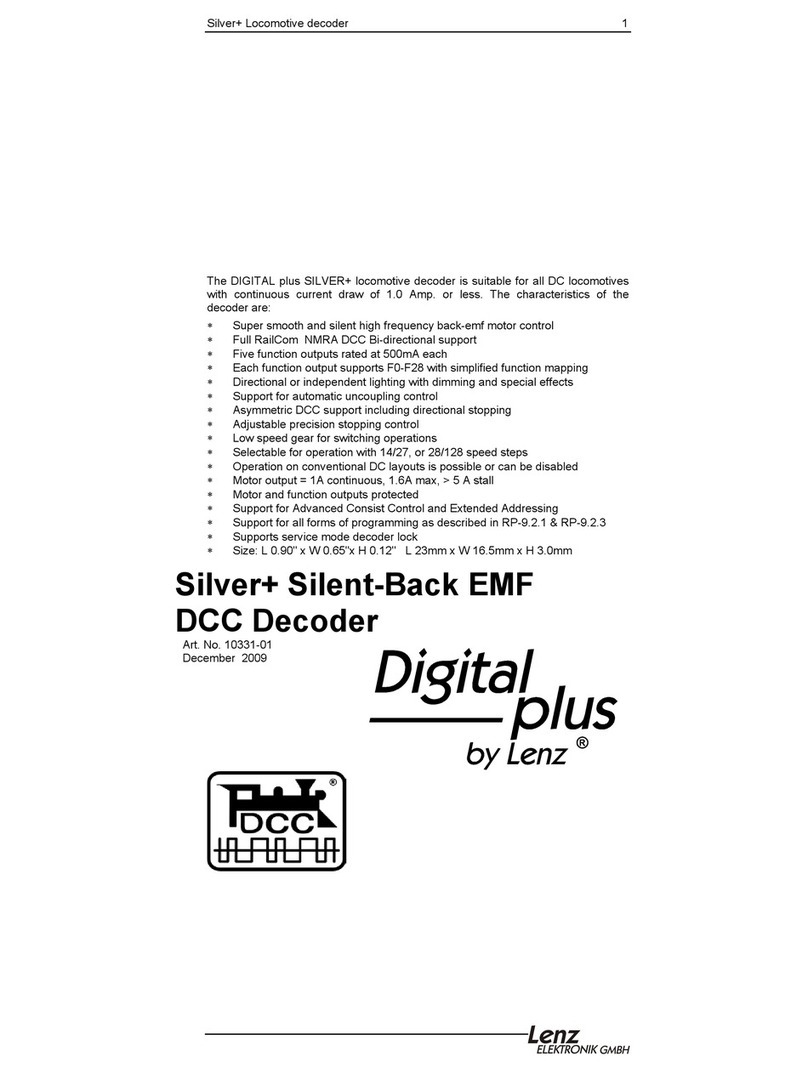
Silver Direct Locomotive decoder 3
Function for disabling of acceleration and deceleration delay
Use function F4 (function assignment can be altered in CV59) to disable the
acceleration and braking delay as well as the constant braking distance during
operation. The delays are disabled as long as the function is active.
Switching speed function
The switching speed halves the speed table. This facilitates particularly sensitive
control during the switching process. Use function 3 (function setting, can be altered in
CV58) to enable and disable the switching speed. If the shunting speed is enabled, the
constant braking distance is disabled. The switching speed is enabled as long as the
function is active
Constant braking distance
During the transition from an active speed step to speed step 0 (e.g. moving the speed
control knob to the left limit-stop), the locomotive/train will travel a settable, pre-defined
braking distance. This braking distance does not depend on the speed of the
locomotive/train.
Enable the constant braking distance function (this requires setting Bit 0(1) in CV51. If
this bit is not set, the decoder will use the normal speed-dependent braking delay).
The braking distance is defined by the value set in CV52. Since the motors and gear
ratios of locomotives vary, the braking distance differs from locomotive to locomotive
even if the same value is set in CV52.
Use a short test section to measure how long your locomotive’s braking distance will
be with a given value set in CV52. Start with the default value (100) in CV52.
Accelerate your locomotive until it has reached average speed.
At a chosen point in time, set the speed to 0. This requires moving the speed control to
the stop position, if you are using the LH100, keep pressing the < key until the speed is
set to 0 or until the locomotive address is displayed (if using the LH100, do not press
key ! This result in a locomotive-specific emergency stop and the delays in the
locomotive decoder will not be enabled!).
Measure the covered braking distance.
Increase or decrease the value in CV52, e.g. in steps of 10, and carry out another
measurement. You will thus create a table which will indicate the braking distances in
relation to the values set in CV52.
Important advice: The constant braking distance is only effective if the speed is
changed to 0. If the speed is decreased from e.g. 28 to 10, the speed-dependent delay
from CV4 becomes effective.
The constant braking distance is disabled while the switching speed function is
switched on (default setting F3), or if the function to disable acceleration/deceleration
is activated (default setting F4). Either of these two features can also be used if you
wish to interrupt a constant braking process prematurely.






























